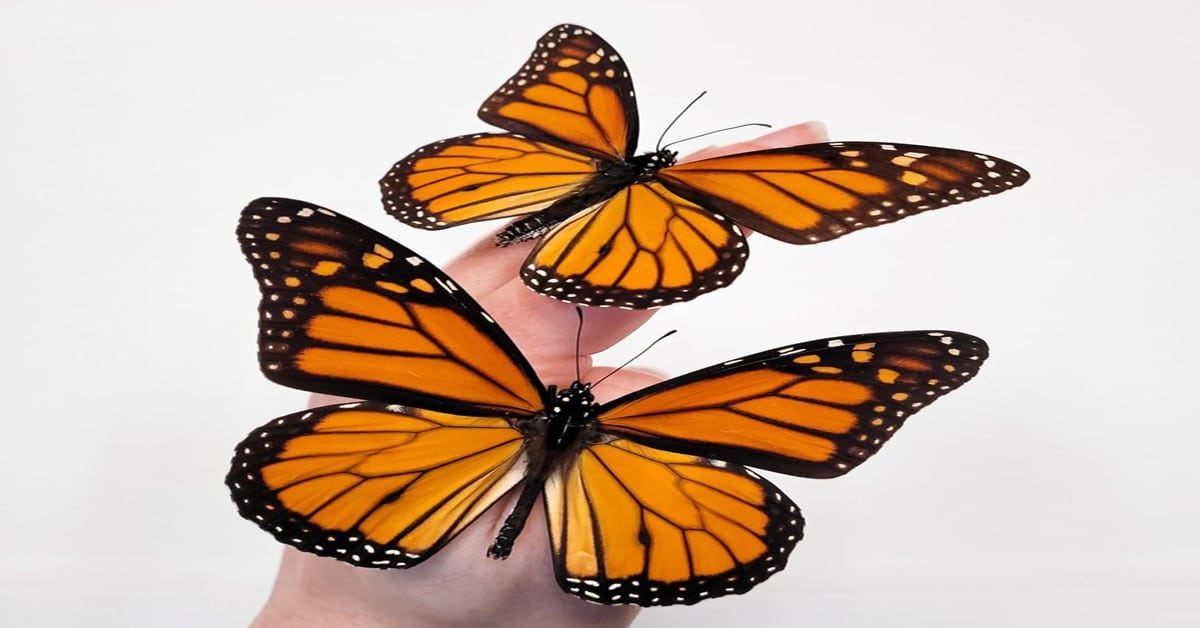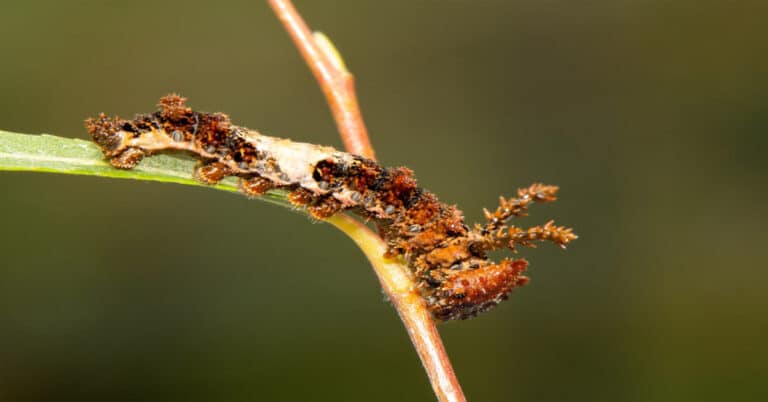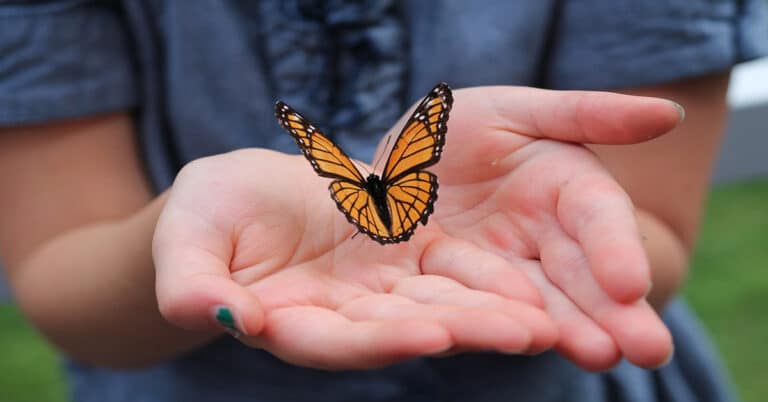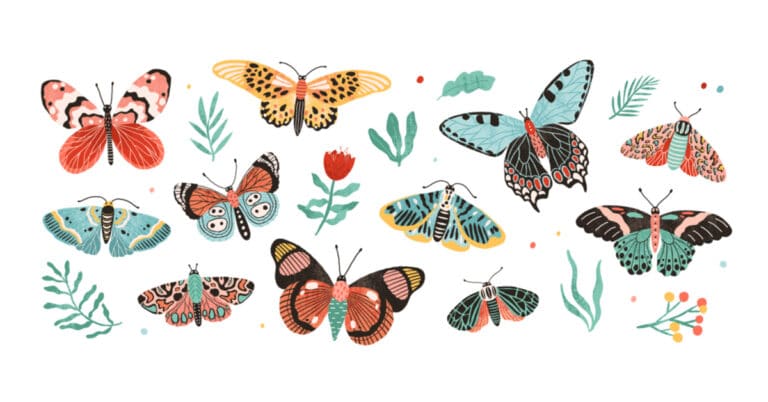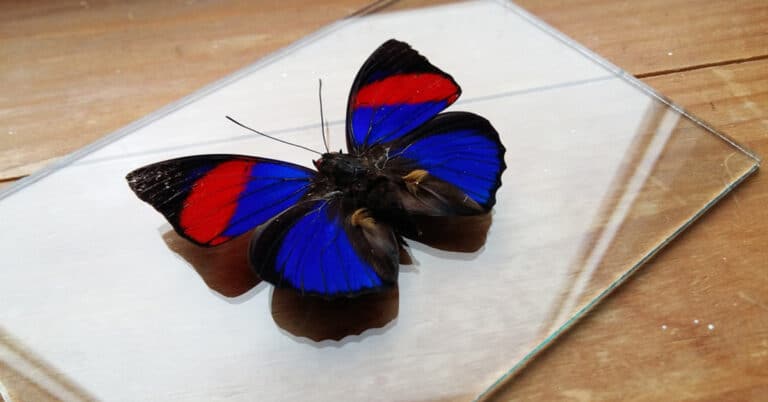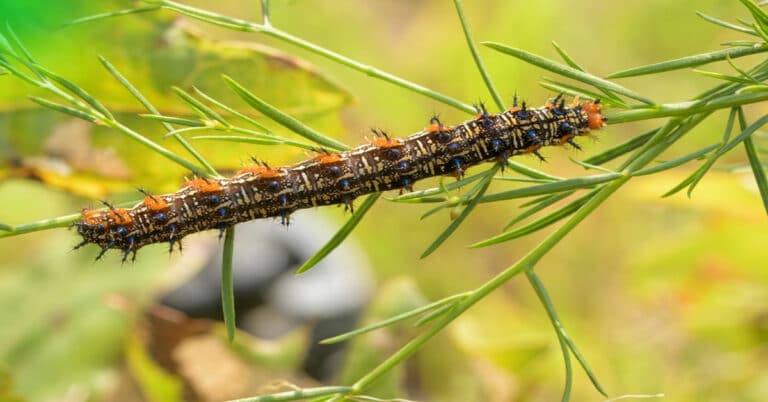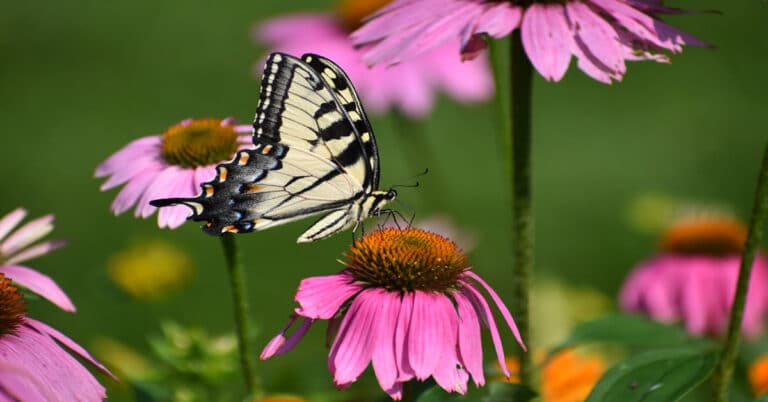Monarch Butterfly Life Span
An individual Monarch Butterfly’s life span may be only a little longer than other butterflies or maybe extended almost twice that length by hibernation. How long Monarch Butterflies live depends partly on the individual butterfly’s place in the four-generation-a-year Monarch Butterfly life cycle.
February-March: The First Generation
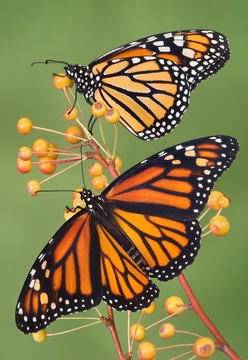
The first generation of Monarch Butterfly eggs, which look like tiny pale yellowish beads, may be laid as early as February in the Southern States, as Monarchs return from hibernation in Mexico and California. Within a week, the eggs hatch into baby Monarch Butterflies. These caterpillars are less than a centimeter long, greenish and translucent, and very easy to overlook as they eat the shells from which they hatched and begin nibbling little holes in milkweed leaves.
Like most caterpillars, Monarch Butterfly caterpillar’s lives are divided into five instars (the time it takes them to outgrow one skin and burst out in a new one). Each instar can last as long as a week but typically lasts half a week. In warm weather, Monarch Butterfly larvae may be ready to pupate two or three weeks after they hatch. Some individual caterpillars eat their old skins.
Second instar Monarch Butterfly caterpillars begin to show stripes as they grow up to a centimeter long. They are covered in hair and develop little bumps where they will later grow long tentacles.
Third instar Monarch Butterfly caterpillars have distinct stripes and recognizable tentacles. The three pairs of legs closest to the head are the true legs that will develop into the long jointed legs of the adult butterfly, and in the third instar, the second and third pair become noticeably longer, even on the caterpillar, than the first pair.
Fourth instar Monarch Butterfly caterpillars are about an inch long (1.5 to 2.5 cm) and begin to show white spots on their hind legs (prolegs).
Fifth instar Monarch Butterfly caterpillars have quite a fancy pattern of black, white, and green-yellow stripes, with long black tentacles and white-dotted black legs. For North American caterpillars they are very large, 2.5 to 4.5 cm long, almost the size of an adult human finger. They can now eat a small milkweed leaf in minutes, or a big milkweed leaf, big enough to fold into a roomy case around them, in less than a day. After a few days at this stage, they finally fill up, stop eating, and look for a place to pupate.
Monarch Butterflies do not spin cocoons. They spin a little mat of silk on the underside of a branch, then hang upside down by their hindmost pair of legs (the claspers) in a J position. Within a day the striped skin falls off, exposing a green chrysalis that looks more like a bead than like a living animal. The Monarch Butterfly chrysalis hangs for about two weeks, not moving, while the pupal butterfly inside goes through its metamorphosis, developing wings, long jointed legs, a long coiled proboscis (tongue), and other features of the adult butterfly that the caterpillar did not have.
At last, the adult butterfly crawls out of the chrysalis. Pulling itself slowly out of this last discarded skin, then waiting and pumping its wet, crumpled wings, are necessary parts of its development. After emergence, Monarch Butterflies usually wait up to twelve hours, or more, before their wings are ready for flight.
Monarch Butterfly wings will carry the butterfly through anywhere from fifteen to fifty days of adult life. Between March and May, this generation of Monarchs will flit about looking for unused milkweed plants where their offspring will find adequate food. Many, though not all, will move north, following the weather into the Northern States.
April-May: The Second Generation
Monarchs who hatch in April and May go through the same stages as those who hatch in February and March. Between May and July, some of them will lay eggs on milkweed plants in Canada.
June-July: The Third Generation
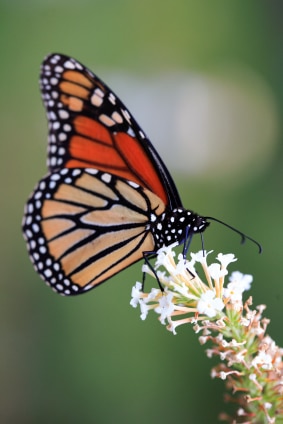
Monarchs who hatch in June and July go through the same stages as the earlier generations. As they fly, in July through September, slightly shorter days and cooler nights motivate them to move southward. Butterflies who hatched in Canada usually lay eggs in the Northern States. In the Middle Atlantic States, some people like to prune back milkweed plants where Monarch Butterfly eggs are not hatching in July, so these plants will have fresh new leaves for the fourth generation of Monarch Butterfly caterpillars to eat after hatching in August or September.
August-September: The Fourth Generation
Monarchs who hatch in August and September begin to fly in September and October. This is the generation that may fly across the Gulf of Mexico. West of the Rocky Mountains, a less hazardous migration leads to Monarch Butterfly groves on the California coast.
Monarch Butterflies have a good sense of smell. The favorite Monarch Butterfly trees, fir, pine, and eucalyptus, have fragrances that may discourage some predators and attract the butterflies. They can hibernate on other kinds of trees if the weather is cool enough. Nevertheless, by following cues in the environment, each year many Monarchs spend the winter in the same trees their great-grandparents used the year before.
Temperature determines the success of Monarch Butterfly migration. Generally, most butterflies survive the winter on the beaches of central California or in the foothills of the Sierra Madre in Michoacn. If they stay too cold for too long, the butterflies may not survive. If the weather is too warm, they may be unable to go into hibernation and not expand the Monarch Butterfly life spans by the full four months. Sometimes the straggler butterflies who do not fly all the way to the major Monarch Butterfly groves will not survive all winter; sometimes they will be the ones who do survive.
Cold temperatures put most cold-blooded animals into a state of suspended animation in which most physical processes slow down or stop. Hibernating Monarch Butterflies wake up and fly from time to time; they like to hibernate near sources of water and fly down for a drink when they wake up. Some changes in their bodies do take place while they rest. For one, by February the mild poison they absorb from milkweed begins to break down, allowing some predators who have eaten one Monarch to consider eating another one. (That does not happen at other times of the year.) However, enough of their body processes shut down that instead of dying and giving place to another generation in October, most Monarch Butterflies complete migration, then mate and lay eggs in February.
Extra Generations in the Monarch Butterfly Life Span
Although the length of the individual Monarch Butterfly life spans can vary and the generations overlap to some extent (as they do with humans), it’s normal for our Monarch Butterflies, Danaus plexippus, to complete four generations in a year. No Monarchs hatch between October and February. However, in Florida, along the Gulf Coast, and in Mexico it is sometimes possible for Monarch Butterflies to stay active all winter, laying their eggs on a tropical species of milkweed and producing one or even two extra generations of Monarchs in winter.
When Monarch Butterfly populations started to decline, some people thought that extra generations would restore population counts. Actually, as those people learned, interfering with the normal Monarch Butterfly life cycle created some problems. Tropical milkweed can harbor tiny parasites that weaken butterflies. Monarch Butterfly migration is strenuous for the butterflies. Not all individuals who migrate survive. Monarch Butterfly populations normally decrease in winter, but this offsets their increase in summer and keeps the species in balance.
Southern Florida and the Caribbean have their own species of non-migrating Monarch Butterflies, Danaus chrysippus, D. eresimus, and/or D. plexaure. (Some scientists consider D. eresimus and D. plexaure as variations within a single species.) These butterflies are better adapted to live in their environments, with little competition from D. plexippus.
Fortunately, nature has limited the extent to which Monarch Butterfly populations can be affected by the possibility of individual butterflies producing extra generations. Slight variations in the general Monarch Butterfly life cycle are possible; major changes would be harmful.

Nato is a content writer and researcher with a background in psychology who’s eager to explore the wonders of nature. As a travel enthusiast and animal lover, she hopes to inspire others to discover and cherish the beauty and importance of the natural world.

